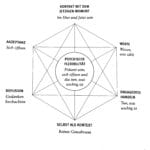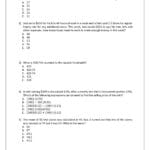Decoding the Dynamics of Figure Skating Jumps
Figure skating leaps are a captivating blend of athleticism, grace, and physics. These gravity-defying maneuvers demand strength, flexibility, and years of dedicated practice. This guide explores the world of figure skating jumps, going beyond the iconic Axel to uncover the secrets behind these mesmerizing aerial feats. We’ll explore not only what these jumps are, but how they’re executed, the science that makes them possible, and the rigorous training required to achieve such breathtaking artistry on ice.
A Guide to Figure Skating Jumps
There’s a diverse family of figure skating jumps, each with unique characteristics and technical demands. It’s not just about height, but also launch technique, rotations, and landing. Let’s break down some key players:
1. The Axel: The King of Jumps
This jump stands out as the only one launched from a forward outside edge. This adds a half rotation, significantly increasing the difficulty. For example, a single Axel is actually 1.5 rotations, a double Axel is 2.5, and so on. It requires exquisite control and momentum, like running into a spin before leaving the ground.
2. The Lutz: Power and Precision
Launched from a backward outside edge, the Lutz uses the toe pick of the opposite foot for lift-off, acting like a lever. Named after Alois Lutz, it demands powerful leg muscles and precise timing. One common challenge with the Lutz is a “flutz,” where the skater inadvertently uses the inside edge instead of the outside edge, resulting in a slightly easier jump.
3. The Flip: The Inside Edge Advantage
Also starting on a backward outside edge, the Flip utilizes the inside edge of the opposite foot for propulsion. This “scooping” motion requires a distinct kind of force and technique. A tell-tale sign of a correctly executed Flip is the distinct “snap” sound as the toe pick engages the ice.
4. The Salchow: Flow and Elegance
Named after Ulrich Salchow, this jump begins on a backward inside edge. The skater swings the free leg forward, using the same edge for a smooth, flowing rotation. It’s often considered one of the more aesthetically pleasing jumps, emphasizing fluidity and control.
5. The Loop: Seamless Continuity
Taking off and landing on the same backward outside edge, the Loop showcases continuous motion. It’s often described as a more natural-feeling jump, although maintaining control throughout the rotation can be challenging.
6. The Toe Loop: A Foundational Jump
Using the toe pick of the free leg to assist takeoff from a backward outside edge, the Toe Loop is a fundamental jump. It often serves as a building block for more complex jumps and combinations.
| Jump | Takeoff Edge | Rotation Direction | Toe Pick Assist |
|---|---|---|---|
| Axel | Forward Outside | Forward | No |
| Lutz | Backward Outside | Backward | Yes (opposite foot) |
| Flip | Backward Outside | Forward | Yes (same foot) |
| Salchow | Backward Inside | Backward | No |
| Loop | Backward Outside | Backward | No |
| Toe Loop | Backward Outside | Backward | Yes (free foot) |
The Science of Soaring: Physics in Figure Skating
How do figure skaters defy gravity? It involves a fascinating interplay of physics. Converting forward or backward momentum into upward motion is the first step. Precise body movements and tight rotations generate angular momentum, which helps maintain stability in the air—like a spinning top. Air resistance, though subtle, influences trajectory and potential rotations.
From Practice to Perfection: Training and Technique
Mastering figure skating leaps requires years of dedication. Off-ice conditioning focuses on building leg and core strength and flexibility. On-ice practice is where technique is honed through repetition, focusing on elements like takeoff angle, body position, and arm movements. Coaches play a crucial role in providing expert guidance, analyzing every detail to maximize performance and minimize injury risk. Advanced training might involve harness systems and specialized equipment to help skaters develop the muscle memory and control needed for complex multi-rotational jumps.
Overcoming Obstacles: Challenges and Solutions
Even elite skaters face challenges. Insufficient takeoff speed, incorrect edge usage, or incomplete rotations can lead to wobbly launches and flawed landings. Coaches employ targeted drills, video analysis, and adjustments to body positioning to rectify these issues. Ongoing research into sports science and biomechanics provides new insights into optimizing technique and preventing injuries.
The Future of Figure Skating Leaps: Pushing Boundaries
Figure skating jumps are constantly evolving. Skaters continually push limits, seeking more rotations, complex combinations, and innovative variations. Quintuple jumps, while not yet consistently landed in competition, are a hot topic of discussion and research. The future may hold even more gravity-defying feats as technology, training methods, and our understanding of human biomechanics continue to advance.
What is a figure skating leap called? (A Deeper Dive)
Figure skating “jumps” and “leaps” are synonymous – those spectacular moments of aerial spins and graceful landings. These highly athletic and technically demanding moves are essential for any competitive skater. They are the building blocks of a figure skating program, adding difficulty and artistry. There are six main jump types, each with its own characteristics, as detailed above. Form 5329 instructions may not be relevant to this topic and should be linked elsewhere within your website where tax information is discussed. Scoring considers height, distance, rotations, and landing quality. While some experts suggest certain biomechanical techniques are more effective, research is ongoing, and what we know about jumps continues to evolve. Figure skating jumps are a complex blend of athleticism, precision, and aesthetic expression.
What is a figure skating leap called a crossword clue?
In crossword puzzles, the four-letter answer for “skater’s jump” is typically “AXEL.” This jump’s unique forward takeoff and extra half-rotation make it a crossword favorite. However, other jumps like the Lutz, Flip, Loop, Toe loop, and Salchow also exist, each with distinct characteristics that crossword creators might use to test solvers’ figure skating knowledge. As mentioned before, the Axel stands out because of its forward take-off, giving it added rotational complexity compared to the Lutz, Flip, Loop, Toe loop, and Salchow, all initiated from a backwards edge. Beyond the basics, skaters perform single, double, triple, and even quadruple variations, dramatically increasing difficulty and scoring potential. Ongoing biomechanical research continues to explore the limits of human performance in figure skating jumps. Understanding the intricacies of each jump is like unlocking a secret code to figure skating crosswords, enhancing appreciation for the sport and aiding puzzle-solving prowess.
What crossword clue skaters jump 4 letters?
The four-letter answer for “skater’s jump” is almost always “AXEL.” The Axel’s unique forward outside edge takeoff and the resulting extra half-rotation contribute to its crossword puzzle popularity. This jump requires greater airtime, further distinguishing it from other figure skating jumps like the Lutz, Flip, Loop, Toe loop, and Salchow. Judges score jumps on height, airtime, and quality, of which the Axel can be the most rewarding if executed flawlessly. Mastering any figure skating jump necessitates strength, flexibility, technical precision, and extensive training. While the Axel is a common crossword clue, understanding its unique characteristics and the broader context of figure skating jumps enhances appreciation for this athletic and artistic sport.
- China II Review: Delicious Food & Speedy Service - April 17, 2025
- Understand Virginia’s Flag: History & Debate - April 17, 2025
- Explore Long Island’s Map: Unique Regions & Insights - April 17, 2025















